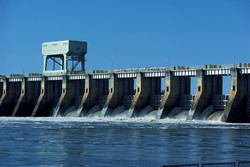Novel approach to tackle European water research, development and innovation challenges
The aim of the EU-funded WATEUR(opens in new window) (Tackling European water challenges) project was to help achieve sustainable water systems for a sustainable economy in Europe and beyond. This activity was part of the EU's Joint Programme Initiative 'Water challenges for a changing world' (Water JPI). Project partners established an effective Water JPI governance to support its structure, management and financing schemes, and laid the foundation for achieving its objectives and ensuring sustainability. They set up several advisory boards to expand Water JPI's partnerships and involve various stakeholders. European leadership regarding water research, development and innovation (RDI) activities was strengthened by publishing several position papers, interacting with other EU initiatives and creating synergies between them. The WATEUR team mapped national and regional RDI institutions and their programmes, projects and funding schemes, thus providing a global overview of water-related actions, actors and capacities. Findings fed into the development of a strategic research and innovation agenda (SRIA) – the pillar of the JPI. This key document identifies the most urgent and relevant water research and innovation gaps and needs in Europe. To implement the SRIA, two Water JPI joint calls were launched by the end of WATEUR to mobilise national and European funds aimed at addressing European water challenges, and another one after its completion. The calls also aim to harmonise or align national water RDI agendas in Europe. Researchers collaborated with countries beyond Europe, leading to common efforts, knowledge sharing and exchange of water RDI best practices. To maximise impact, Water JPI activities and results and the latest news on water RDI and policies were widely disseminated. WATEUR supported the successful development and implementation of the Water JPI. It also addressed fragmentation, preventing duplication of efforts and guaranteeing sufficient critical mass.



